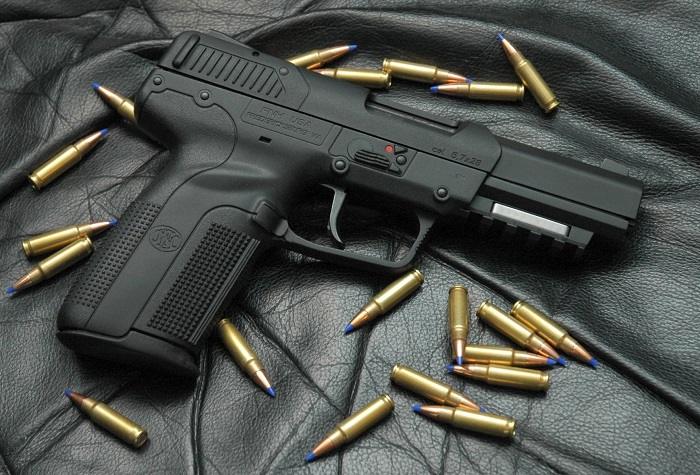Do you carry a handgun for self-defense? If so, carry a good flashlight. The statistics indicate approximately 60 percent of all confrontations occur in dim light conditions. That does not necessarily mean complete darkness, but rather diminished lighting to the point where your ability to identify the threat is jeopardized. You are responsible for knowing what you’re shooting at and for every round that leaves the muzzle.
Just like a good blade, there are many other reasons defensive-minded folks may want to carry a good light. Defensive strikes, a disorienting strobe, navigation and signaling all come to mind aside from threat identification. High quality pocket carry lights with variable brightness and strobe features are widely available today. There’s no reason not to carry one.
For most, the thought of holding a light and shooting is a daunting thought. Yes, there are weapon-mounted lights and lasers (lasers do not allow for identification), but there are some distinct advantages of a handheld light. One is that you can use a handheld light to search and identify without having to muzzle everyone. This would not be the case with a weapon-mounted light system. Weapon-mounted lights have their place, but you should carry a handheld, as well.
Keeping the above in mind, let’s examine some common methods for using a handheld light and shooting a pistol at the same time.
Harries Technique
This is probably one of the better-known techniques and has been used for years by police. The shooter holds a light with a rear- or side-pressure switch in the support hand, which moves under the gun hand as the weapon is aimed. Back of hands are then pressed together, creating “back of hand to back of hand” isometric tension. This creates a stable platform for shooting.
Be Prepared. Learn The Best Ways To Hide Your Guns.
A potential downside to this technique is that the light is essentially attached to the gun, similar to a weapon-mounted light. Thus, the shooter must be cognizant of muzzling anything they’re not willing to destroy while searching with light and gun together.
Chapman Technique
A flashlight with a side-mounted pressure switch is most appropriate here. In the support hand, the shooter will hold the light with the thumb already positioned on the pressure switch. The light is then positioned against and parallel to the support side of the pistol. The shooter’s middle, ring and pinky fingers give nearly full support to the shooting hand. In essence, you can obtain almost a full grip while still utilizing the flashlight. Once again, you must be aware of potential muzzling of unintended targets.
Rogers Technique
This method utilizes a rear pressure switch light, having a raised ridge or ring around the tubular housing. The light is held in the support hand between the index and middle fingers, akin to holding a cigar. The shooter pulls the light rearward, pressing the switch into the meaty portion of the palm/base of thumb, thereby activating the pressure switch. A full two-handed grip on the pistol can be obtained with the proper light and some practice. There are specific lights made for this technique. A flashlight with a rear-mounted pressure switch that works well with the Rogers method is the Surefire model G2ZX.
Neck Index
This technique requires you to shoot one handed and utilize the light separately. One benefit is that you can use the light to search and identify without muzzling unintentional targets, keeping your handgun in a low, ready position. There are several variations of this method: jaw index, ear index and cheek index. Use a rear-pressure switch light in the support hand and utilize the neck, jaw line, etc., to lightly rest and aim the light.
FBI Technique
The FBI method involves holding the light in the support hand, away from the body. This allows you to keep the light away from your center in case an assailant shoots into the light. It provides mobility of the support hand and arm to use the light for searching the threat area. This is another one-handed shooting technique that will require some practice.
As with any defensive firearm training method, I recommend the gun owner obtain professional instruction from a credible instructor. Remember that the majority of self-defense encounters occur in dark or at least reduced light conditions. If you choose to be armed, you owe it to yourself and others to become proficient in defensive methods to include shooting with a handheld light.
What advice would you add? Share it in the section below:
If The Grid’s Down And You Don’t Have Ammo, What Would You Do? Read More Here.
 Off The Grid News Better Ideas For Off The Grid Living
Off The Grid News Better Ideas For Off The Grid Living




